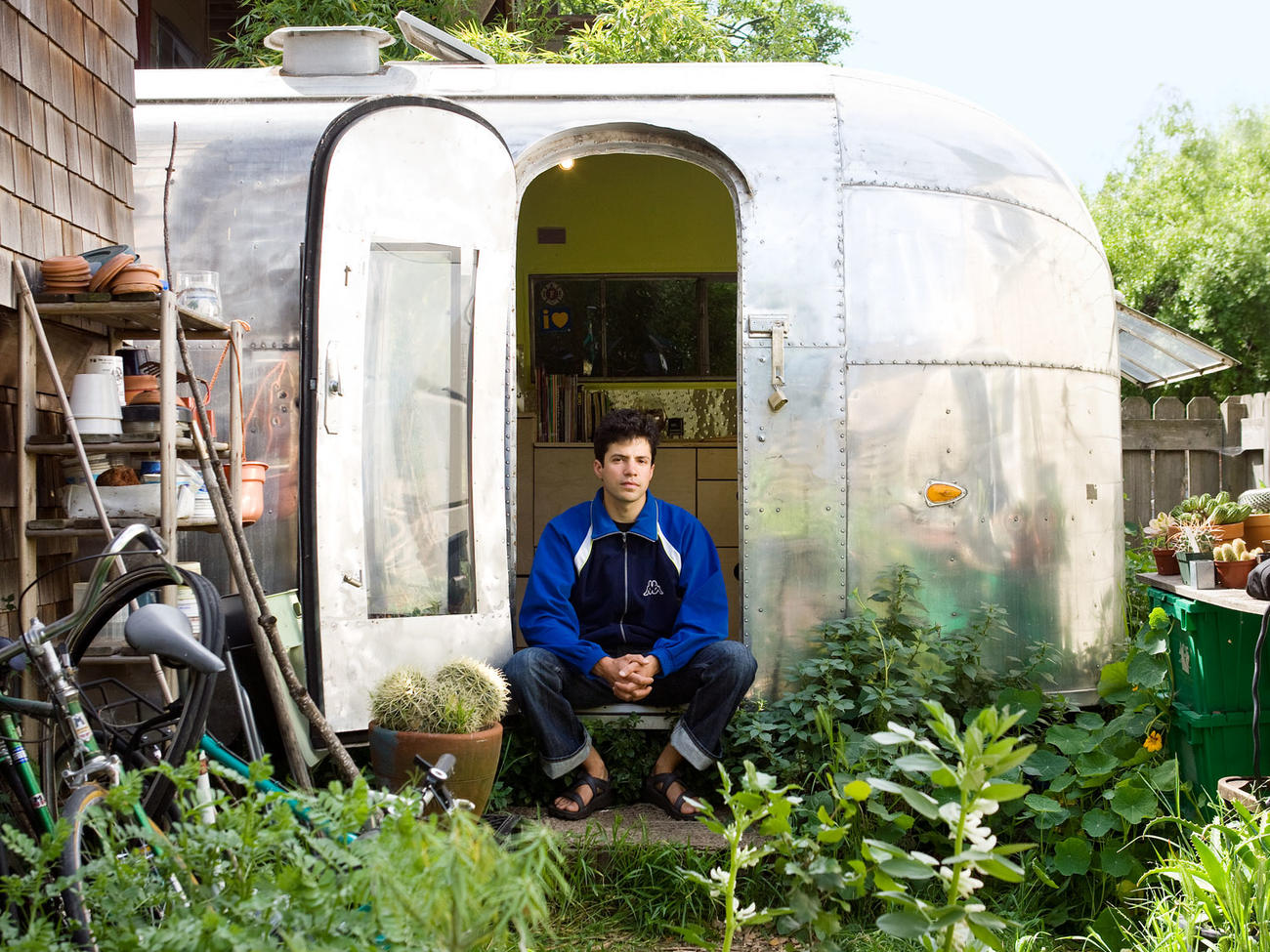
Small-Space Living: Design to Go

Andreas Stavropoulos is a man on the go. Each day he wakes up inside the 1959 Airstream trailer that he bought from a collector, retrofitted, and now calls home. He breakfasts in the Airstream’s small “kitchen,” then heads to work. But the Berkeley-based landscape architect doesn’t drive to an office; he heads to the actual site in his Honda CR-V, towing behind it a wheeled “think tank”—a 2003 cherry-red Wells Cargo trailer that he found on Craigslist.
The view through the Airstream’s back window shows the entire layout of the home.
There are no closets, so Stavropoulos keeps possessions to a minimum.
